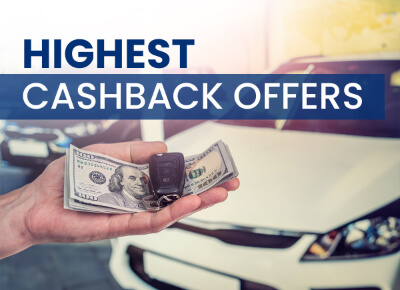CarBrain Review: Will They Really Buy a Totaled Car?
January 5, 2023


I am a serial entrepreneur and a consumer advocate. When I’m not helping car buyers, I love working on ventures that have a positive impact.
I run a cause marketing agency and serve on the board of Vayu Global Health where we are disrupting the medical industry and preventing the needless deaths of mothers and babies during childbirth.
Getting rid of an old or damaged car can be a major headache.
CarBrain offers a “market for less-than-perfect cars,” providing a fast and easy way to sell your car from your home.
As avid car guys (with more than a few less savory cars), we know how hard it can be to unload that burden. We had the same questions: Can you really get a fair deal for your totaled car with CarBrain? Is the process as easy as it sounds?
In our full review of CarBrain, we’ll share the details about their service and everything you need to know to decide if their service is worth using.
Key Takeaways
- Get a fair price for your car no matter the condition (totaled, flooded, scrap, etc.)
- Instant cash offer, good for 7 days
- Free towing and you'll avoid typical junk removal fees
- Sell your vehicle without leaving your home.
Table of Contents
- Key Takeaways
- Key Takeaways
- What is CarBrain?
- How Does CarBrain Work?
- How to Sell a Car Through CarBrain
- Can You Buy a Car Through CarBrain?
- Can You Negotiate with CarBrain?
- CarBrain Fees – What’s the Catch?
- CarBrain Review – The Good & Bad
- CarBrain Customer Reviews & Complaints
- Alternatives to CarBrain
- Conclusion
- Best Car Deals by Category
- Frequently Asked Questions
Key Takeaways
- CarBrain is a legit company that sells used cars in less-than-perfect condition
- The pros are that CarBrain is free, convenient, and easy to use
- The cons are that some customers have claimed about customer service and the professionalism of the workers who picked up their car
What is CarBrain?
 CarBrain is a company that purchases used vehicles in many conditions. They focus on offering a fast, simple, and safe way to sell your car regardless of its condition.
CarBrain is a company that purchases used vehicles in many conditions. They focus on offering a fast, simple, and safe way to sell your car regardless of its condition.
The nationwide company has been operating for over 12 years. It’s managed by CAS Auto Founders and headquartered in Miami, Florida.
Is CarBrain Legit?
CarBrain is a legit company that offers a marketplace for selling cars in less-than-perfect condition. They have been operating for over 15 years and are licensed with Better Business Bureau accreditation. CarBrain has established credibility through positive customer ratings on TrustPilot, Google, and Facebook. They provide a fast and simple way to sell your car, regardless of its condition, and offer an instant cash offer that is valid for 7 days.
The process of selling a car through CarBrain is relatively straightforward. You provide the details of your vehicle on their website and receive an instant cash offer. If you accept the offer within the 7-day guarantee period, you must have the signed title, keys, and the vehicle itself. CarBrain offers assistance in releasing the title if needed. Once you accept the offer, CarBrain picks up your vehicle and provides payment, usually within 24 to 48 hours.
CarBrain focuses on purchasing vehicles in all conditions, including damaged, junk, or non-running cars. They offer a fair deal compared to what a traditional junkyard might offer. The service is convenient as it allows you to sell your vehicle without leaving your home, and they cover the towing fees. While CarBrain is a legitimate and reputable company, there are a few drawbacks to consider. It may not be the best option if you have a used car in good condition, as they specialize in purchasing damaged vehicles.
The quality of service for vehicle pickup can vary since CarBrain works with contractors. Additionally, the amount offered for your vehicle is subject to change if its condition is not accurately depicted or if it is missing parts.
Where Is CarBrain Available?
CarBrain is a nationwide company, available throughout the continental United States. Residents in the 48 continental states can use their service.
How Does CarBrain Work?
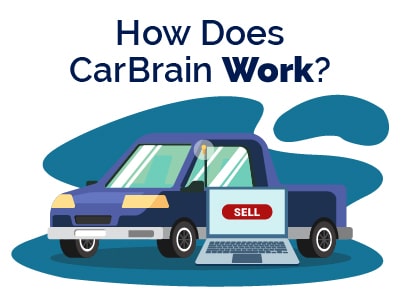 CarBrain purchases vehicles in all conditions from the major car manufacturers. They specifically state that they buy damaged cars nationwide, aiming to appeal to those who want to offload vehicles in several conditions.
CarBrain purchases vehicles in all conditions from the major car manufacturers. They specifically state that they buy damaged cars nationwide, aiming to appeal to those who want to offload vehicles in several conditions.
Damaged vehicles from bad gas or large amounts of sugar in the gas tank are worth trying to sell on CarBrain.
How Does CarBrain's Instant Offer Work?
When you sell your car through CarBrain, they provide you with an instant cash offer. The offer is locked in for 7 days, which means you can accept it anytime within those 7 days.
If you wait until after the guarantee period, then the offer amount is subject to change.
How to Sell a Car Through CarBrain
Selling to CarBrain is fairly simple. Here’s the process:
- Details. Enter vehicle details on their website. Fill out the form on their website and receive an instant cash offer.
- Offer. Accept CarBrain’s offer. You have 7 days to accept the offer. If you decide to accept the offer, you must have the signed title, keys, and the vehicle itself. CarBrain offers to help you get the title released if necessary.
- Paid. Get your money. CarBrain picks up your vehicle and provides you with payment. Most of the time, you can expect them to pick up the vehicle sometime between 24 and 48 hours of when you accept the offer.

Can You Trade-In a Car Through CarBrain?
CarBrain describes trading in your vehicle on its website, but in reality, it does not offer conventional trade-ins.
Of course, you can put the money you earn from your used car into buying a new car. However, you cannot directly trade in your vehicle with CarBrain at this time.
- Get a fair price for your car no matter the condition (totaled, flooded, scrap, etc.)
- Instant cash offer, good for 7 days
- Free towing and you'll avoid typical junk removal fees
- Sell your vehicle without leaving your home.
Can You Buy a Car Through CarBrain?
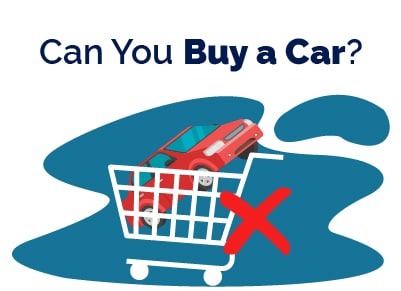 CarBrain does not sell cars to individuals. You cannot buy a car through CarBrain, only sell one. If you're looking to buy a used car, check out Carvana.
CarBrain does not sell cars to individuals. You cannot buy a car through CarBrain, only sell one. If you're looking to buy a used car, check out Carvana.
Can You Negotiate with CarBrain?
No, you cannot negotiate with CarBrain. You can only accept or decline their instant offer. If you decline or do not accept within 7 days, then the offer may change in the future. When determining the value of your offer, CarBrain assesses the age, condition, and market value of the vehicle.
CarBrain Fees – What’s the Catch?
Sellers face no fees with CarBrain. You can sell your car without any added fees. They also pay for towing to pick up the vehicles they buy. Given this, how does the company make money? Let’s take a closer look.
How Does CarBrain Make Money?
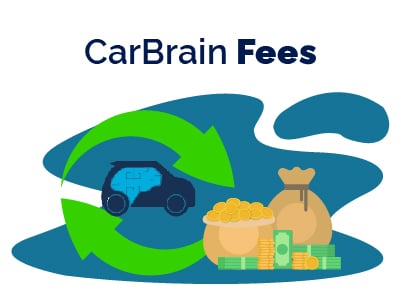 CarBrain makes money by disposing of the vehicles. When possible, they repurpose the cars. Of course, not all cars are able to be restored for daily use. In those cases, CarBrain will rebuild the car and sell it for a higher value. They may also sell the parts or recycle the metal parts.
CarBrain makes money by disposing of the vehicles. When possible, they repurpose the cars. Of course, not all cars are able to be restored for daily use. In those cases, CarBrain will rebuild the car and sell it for a higher value. They may also sell the parts or recycle the metal parts.
Does CarBrain Pickup Vehicles?
Yes, CarBrain picks up the vehicles it buys. The company works with contractors around the country to arrange fast pickup for all the vehicles they buy. Most of the time, CarBrain can pick up your vehicle within 48 hours.
How Does CarBrain Work If My Car Is Still Financed?
You need to handle the loan to sell the vehicle. CarBrain suggests that you pay off the loan or transfer it to a new vehicle via a collateral swap. Most dealers can assist with this, but CarBrain also offers to help.
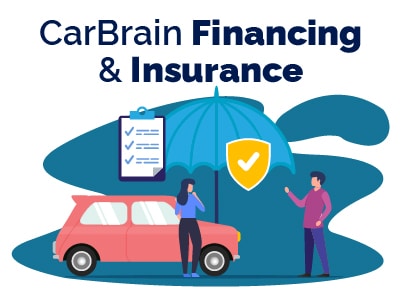
Does CarBrain Work With My Insurance?
One way they offer to help is by purchasing your car. For severely damaged vehicles, selling it may be better than dealing with expensive repairs.
Additionally, CarBrain will pay the residual damage of the car based on the amount the insurance company will pay. This way, the car owner will get the damage settlement from the insurance company and then a second payment from CarBrain for the total salvage value of the vehicle.
You can use these combined payments to buy a new vehicle.
CarBrain Review – The Good & Bad
Pros: Here’s What I Like About CarBrain
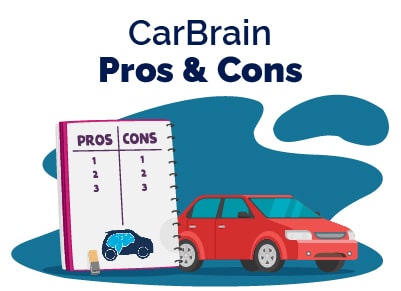 Easy. Streamlined 3-step process
Easy. Streamlined 3-step process- Fast. Instant offer within 2 minutes. You can sell your car within 48 hours of accepting the offer.
- All Conditions. CarBrain buys damaged vehicles and vehicles in all conditions.
- Fair Deal. They offer a fair deal for damaged/junk vehicles compared to what a junkyard would offer.
- No Fees. Avoid fees for getting rid of a junk car.
- Convenience. Sell the vehicle without leaving your home.
Cons: Here’s What I Don’t Like About CarBrain
- Other Options. Not the best option for used cars in good condition
- Towers Can Vary. Since they hire contractors for pickup, the quality of service may vary
- Offer Can Change. The amount you receive is subject to change if your vehicle condition is not depicted accurately or if it is missing parts
CarBrain Customer Reviews & Complaints
CarBrain has a strong customer reputation. On Trustpilot, they have an impressive 4.8 out of 5 stars for over 3,000 reviews. They also have 4.7 out of 5 stars on Google reviews out of nearly 500 reviews.
Here are some of the top positives that customers mention:
- Easy to use
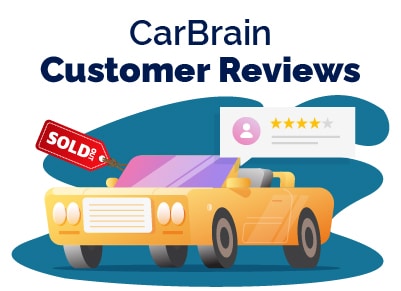 Quick process
Quick process- Fair price for the vehicle
- Haggle-free
- Good customer service
On the other hand, here are some common complaints from customers:
- Some customer service complaints
- Complaints about the professionalism of the pickup workers
- Some say they did not receive the amount they were quoted
Alternatives to CarBrain
CarBrain is a strong option for those looking to sell damaged vehicles. However, there are other options, including ones that may be better to sell vehicles in better condition. Check out the top CarBrain alternatives below:
- Peddle: Peddle is another online car-buying company. They purchase vehicles in all conditions. They also have a buyer network where you can list your vehicle privately if you don’t accept their offer. Read our review to learn more about Peddle.
- Carvana: Carvana is one of the leading online used car dealerships. You can sell your used vehicle, but you can also buy or trade-in with Carvana. It’s well known for its convenience and wide array of options. Read our full Carvana review.
- Vroom: Vroom is one of the most popular competitors to Carvana. It’s a used car dealership with financing options. Learn all about Vroom in our review, and read this comparison to see how Vroom and Carvana compare.
- Shift: Shift is a haggle-free option for buying or selling a used car. They only sell vehicles they own, offering a convenient process. Learn more with our Shift review.
- WeBuyAnyCar: As the name suggests, WeBuyAnyCar claims to purchase vehicles in any condition. You can complete the simple process from the comfort of your home. Read our review to learn more about how this service works.
- Wheelzy. Wheelzy provides good service and can be a great option if you want to get rid of a vehicle quickly. It’s especially ideal for older cars or those in bad condition that would be hard to sell. Read our full review of Wheelzy.
- Carwiser: Carwiser is a site that promises to help sellers get the best price for their cars by letting customers choose from multiple offers. Find out more in our review.
Conclusion
In general, CarBrain is an easy, convenient way to get rid of your car. That being said, they have some customer service complaints and there are simply better options out there.
- Get a fair price for your car no matter the condition (totaled, flooded, scrap, etc.)
- Instant cash offer, good for 7 days
- Free towing and you'll avoid typical junk removal fees
- Sell your vehicle without leaving your home.
Best Car Deals by Category
Frequently Asked Questions
What happens to my car after selling it to CarBrain?
After CarBrain buys your vehicle, they repurpose, rebuilt, or sell the parts. What they do with the vehicle depends on its condition and market value.
What type of cars does CarBrain buy?
CarBrain purchases vehicles with damage. This includes old/high mileage vehicles, classic cars, totaled cars, non-running vehicles, luxury vehicles, exotic cars, and those with electric and/or mechanical damage.
Will CarBrain buy a junk car?
Yes, CarBrain will purchase a junk car. They are willing to buy cars in all conditions.
Does CarBrain give you cash?
CarBrain states that you can get cash for selling your vehicle to them.
How much is CarBrain?
CarBrain does not charge for its services. You can sell your vehicle to them without any added fees.
Can I sell a car to CarBrain without a title?
No, you need a title to sell your vehicle to CarBrain. They offer to help you get your title released by a lienholder.
Posted in Car Buying Tips, Car Trade-In & Sell |


